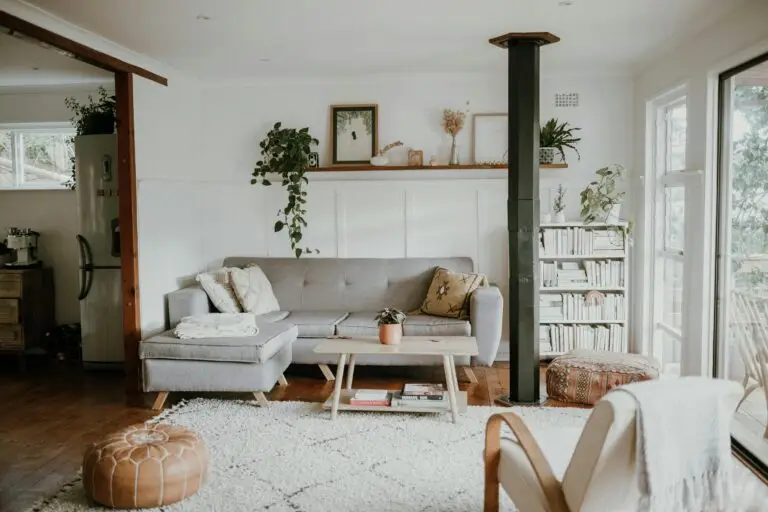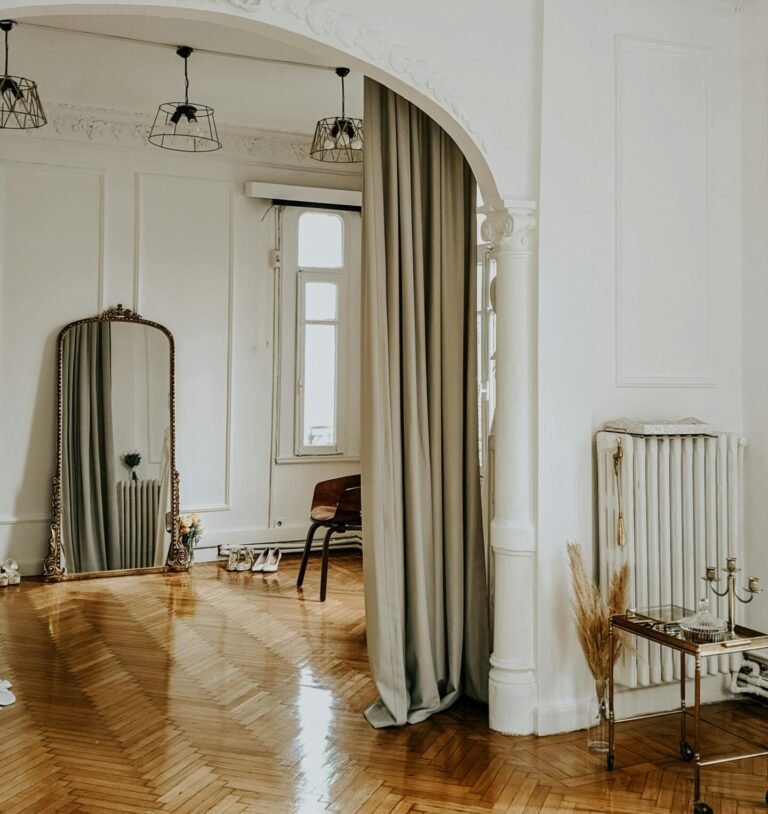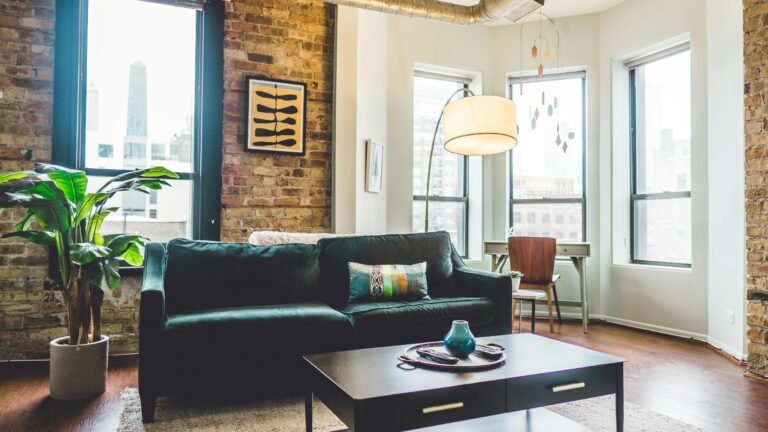3 Items That Instantly Transform Your Space

The spaces we live in are the sources of inspiration, energy, and they can change the way we feel every day. A well-designed room goes beyond aesthetics—it shapes the way we experience our space, influencing our mood, energy, and even productivity. When a space feels balanced, inviting, and thoughtfully put together, it has the power to create a sense of peace and inspiration.
But here’s the best part: you don’t need a full renovation to make a difference. Sometimes, just a few simple updates can breathe new life into your space—turning the ordinary into something truly special. The key to successful home refreshes is choosing pieces that blend function with beauty—small changes that have a big impact.
Ready to refresh your home? Here are three decor essentials that make an instant impact.

1. Full-Length Mirrors: The Functional Elegance
There’s something undeniably elegant and timeless about a full-length mirror. As its name suggests, a full-length mirror allows you to see your entire reflection from head to toe, making it an essential piece for both practical and decorative purposes. More than just a reflective surface, it brightens your space with natural light, and adds a touch of sophistication. It’s like an invitation to appreciate yourself, boosting confidence with every glance. If you don’t own one yet, you might be missing out on both style and functionality.
Unlike wall-mounted mirrors, a leaning mirror—another term for a full-length mirror—offers a relaxed, modern vibe. The best part? It doesn’t require drilling holes into the wall, making it a fantastic option for renters or those who enjoy frequently rearranging their space. The flexibility of a leaning mirror allows you to move it around easily, letting you test out different angles and placements until you find the perfect spot. Some people even position their full-length mirror at a slight angle to reflect more of the ceiling, creating the illusion of a taller, airier room.
But the benefits of a full-length mirror go beyond aesthetics. It plays a significant role in making a space feel more open and inviting. Because mirrors reflect both natural and artificial light, they can brighten up darker corners and make even small rooms feel more spacious. If placed strategically—such as across from a window—it can amplify the amount of sunlight that enters the room, giving your space a warm and airy feel.
Functionality is another key reason to invest in a full-length mirror. Imagine you’re putting together an outfit, checking your posture, or simply ensuring you look put-together before heading out, wouldn’t it be nice to have a full-body view. In bedrooms, closets, or entryways, a full-length mirror provides convenience while significantly improving the space’s overall design.
For those who love a polished and cohesive look, framed full-length mirrors can add an extra layer of style. A wooden frame brings warmth and a rustic touch, a sleek metal frame adds a contemporary feel, and an ornate gold or silver frame introduces an element of luxury. If you prefer a minimalist aesthetic, a frameless design keeps things clean and simple while still making a strong impact.
Ultimately, a full-length mirror isn’t a complicated or expensive addition, but it can dramatically change how you experience your home. It’s a decor piece that’s definitely worth considering.

Where to Place a Full-Length Mirror
But where to place one?
The most common and functional spot is the bedroom. Either leaning against the wall or mounted behind a door, it allows you to check your outfit from head to toe before stepping out. If you have a dressing area, placing the mirror near good lighting can enhance your morning routine.
The entryway is another excellent location. A full-length mirror near the front door lets you do a final check before leaving the house, while also making the space feel brighter and more welcoming. It can also reflect decorative elements, enhancing your home’s aesthetic.
For a more unexpected choice, consider placing one in the living room. A strategically placed mirror can create the illusion of more space, making the room feel open and airy. It’s also a great way to reflect natural light, especially in smaller or dimly lit areas.
If you have a narrow hallway, a full-length mirror can prevent it from feeling too confined. By reflecting light and depth, it makes the space feel more expansive. No matter where you choose to place it, a full-length mirror brings both function and style to your home.
If you’re looking for a well-reviewed, stylish and affordable full-length mirror, this highly-rated option on Amazon has been a favorite among homeowners.

2. Floor Lamps: The Simple Upgrade
Why a floor Lamp is a must-have? Lighting plays a huge role in how a space looks and feels. It’s not just about brightness—it’s about creating an ambiance in a room. That’s where a floor lamp comes in.
Unlike overhead lighting, which can sometimes feel harsh, a well-placed floor lamp, like this dimmable floor lamp, adds softness and depth to a space. Regardless you want a cozy reading corner, a stylish statement piece, or just a bit of extra light in a dim area, a floor lamp is one of the easiest ways to transform your home. Good lighting isn’t just about one bright source. Floor lamps help balance a room’s lighting, reducing shadows and making everything feel more inviting. No need for bulky furniture or extra tables. A floor lamp fits into tight corners and awkward spaces effortlessly.
One of the biggest advantages of floor lamps is their ability to provide layered lighting. Instead of relying on a single bright overhead light, which can create unflattering shadows and uneven illumination, floor lamps help distribute light more evenly throughout the room. This results in a more balanced and inviting environment, making any space feel comfortable and well-lit.
Floor lamps are also incredibly versatile. They come in a wide range of designs, from sleek and modern to ornate and traditional, allowing you to find one that perfectly matches your style. Adjustable and dimmable options give you control over brightness, so you can create the perfect lighting for any time of day. Need soft lighting for a relaxed evening? A dimmable floor lamp can instantly set the mood.
Another major benefit is that floor lamps don’t require additional furniture to function. Unlike table lamps, which need a side table or nightstand, floor lamps can stand alone. This makes them ideal for small spaces, tight corners, or rooms where you want to maximize floor space. They also serve as decorative elements, adding height and visual interest to a room without overwhelming it.
Adding a floor lamp into your home is one of the easiest ways to improve both function and style. If you’re aiming for a warm, inviting glow or a bold statement piece, the right floor lamp elevates your space while providing practical, beautiful lighting.
Where to Place a Floor Lamp
Placing a floor lamp next to a sofa or armchair is a classic choice. This setup creates the perfect reading nook, offering soft, warm light without being too harsh. Put your floor lamp either of these two spots, then dive into a book, scroll through your phone, or simply enjoy a quiet evening.
Another great spot is in a dark or unused corner. Floor lamps have the ability to open up a room, making small spaces feel bigger and more inviting. If you have an awkward corner that feels a little neglected, a stylish lamp can instantly transform it into a focal point while improving the overall lighting of the room.
For those who work from home or need extra light for tasks, placing a floor lamp beside a desk is a sleek and space-saving solution. Unlike bulky desk lamps that take up valuable surface area, a floor lamp provides ample illumination while keeping your workspace clutter-free.

3. An Area Rug: The Cozy Touch
A living room without a rug can sometimes feel a little…unfinished. Even if you have stunning flooring, a rug adds warmth, comfort, and a sense of cohesion to the space. It softens hard surfaces, makes the room feel more inviting, and brings all the furniture elements together in a way that feels intentional.
But this doesn’t mean you need a massive, wall-to-wall rug. Sometimes, a smaller, well-placed rug under a coffee table is all it takes to create a more polished and stylish look. A rug can help define your seating area, giving the space a clear focal point while adding texture and depth. Without it, furniture can sometimes feel like it’s floating rather than being anchored in the room.
Rugs also have a way of enhancing the atmosphere of a space. They absorb sound, reducing echoes and making the room feel quieter and cozier. If your living room feels a little too open or sparse, a rug can instantly make it feel more intimate and welcoming. It’s one of those small details that has a surprisingly big impact, making the space feel thoughtfully designed rather than just furnished. Another underrated benefit? Comfort. There’s something about stepping onto a soft rug that feels instantly relaxing. You can sit on the couch with your feet resting on it or play with kids or pets on the floor.
Choosing the Perfect Rug for Your Living Room
Now, you need to choose one. But with so many options available, finding the perfect one for your space requires careful thought. Because every detail plays a role in how the rug changes the overall look and functionality of the room.
One of the most important factors to consider is size. A rug that’s too small can make the space feel disjointed, while an oversized one might overwhelm the room. The ideal rug should extend just beyond the coffee table, creating a defined area without overpowering the furniture arrangement. It helps visually anchor the seating area, making everything feel more intentional and balanced.
Another key aspect is the texture and feel underfoot. If comfort is your priority, opt for something with a soft, plush surface. A cozy rug makes the living room feel more relaxed and comfortable, especially if you like to lounge barefoot or sit on the floor. On the other hand, if you prefer a modern, structured aesthetic, a lower-pile rug offers a sleeker, more refined look.
Beyond feel and function, the design of the rug plays a huge role in setting the tone of the room. A neutral rug seamlessly blends into the space, allowing furniture and decor to take center stage. However, if your living room has a more understated design, a bold or patterned rug can introduce personality and become a statement piece. It adds visual interest, depth, and even a pop of color, preventing the space from feeling too plain.
Practicality is another major factor, especially in a high-traffic area like the living room. Coffee spills, snack crumbs, and pet hair are inevitable, so it’s essential to choose a rug that’s easy to maintain. Opt for a material that’s simple to vacuum and spot-clean, ensuring it stays fresh and stylish with minimal effort.
At the end of the day, the perfect rug is one that complements your space while also fitting your lifestyle. Whether you prioritize comfort, aesthetics, or durability, the right rug brings everything together, making your living room feel effortlessly polished and complete.
Small Changes, Big Impact
A few carefully chosen pieces can transform your living room into a space that feels both functional and welcoming. These simple upgrades don’t require a complete redesign, but they can make a world of difference in how your home looks and feels. The best part? These items are versatile, affordable, and easy to incorporate into any style, from modern to classic. The key is selecting elements that are both functional and stylish, blending into your existing decor while adding warmth, character, and practicality. So if you’re looking to refresh your living room, start with these simple updates—you’ll be amazed at the change they can bring. I hope this post has inspired you to add those little touches that can make a big difference in your space.
Disclosure: Please note, all links to Amazon in this post are ordinary links and are not affiliate links. All images in this post are sourced from Pexels.com.
Last updated on: April 14, 2025